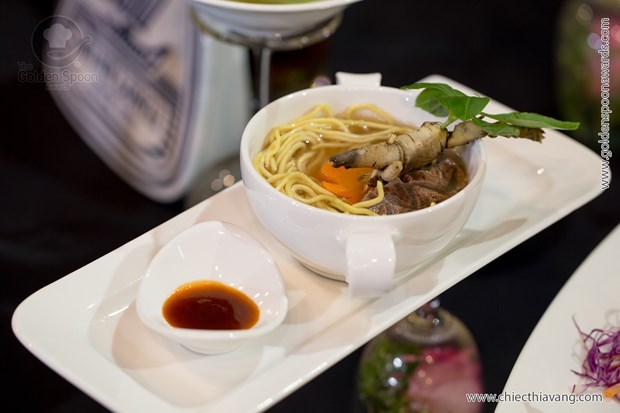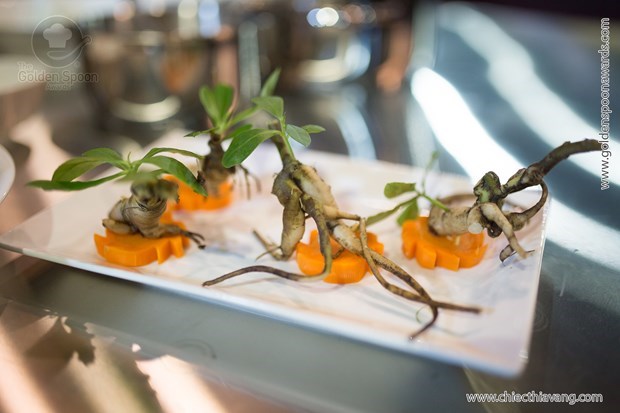Last week, a friend of mine told me about a nutritious dish, which probably he learnt from The Golden Spoon culinary contest – stewed beef shank, Fame-flower roots, and inner membranes of chicken gizzards served with flame-flower leaves and fresh noodles.

Delicious food from fameflower roots.
I wanted to give it a shot because their ingredients
were easy to get, in which the inner membrane of chicken gizzard is a folk
medicine. However, Fameflower leaves sounded strange. From the Internet, I had
found several types that confused me to choose the right one. Therefore I had
to call my friends to confirm and also to share this new knowledge.
According to an expert doing researches on natural
herbs of folk medicine, Fameflower’s (Talinum paniculatum) origin is from Latin America. This
wild plant is about 30 – 50cm height with soft and succulent leaves; its ripe
fruits are red-brown, which contains flat black seeds; its tuberoid roots are
like gingseng. In Viet Nam, it has many different names, such as Indochina
gingseng, ewels-of-Opar (a name borrowed from the title of the novel Tarzan and the Jewels of Opar by Edgar Rice Burroughs), or pink baby's breath. People raise fameflower
at home to decorate, to collect its leaves as vegetables and its roots as
natural medicines.

Roots of fameflower.
Modern researches have recorded that
fameflower roots contain many types of drugs which have multiple effects as anti-inflammatory/
expectorant/ insomnia, preventing cholesterol absorption, anti-aging,
supporting for treatments of hepatitis/ cirrhosis/ colitis/ diarrhea/
poisoning, and reducing the risk of colon cancer.
Fameflower leaves and roots have
been using by Vietnamese folk medicine long time ago but recently, fameflower
has become a new dish. Its leaves and tips have mucilage; can be eaten raw or
cooked (boiling, stir-frying with garlic, or making soup with meat or seafood).
Moreover, smashed fameflower leaves are used to treat sores, ulcers, and heat
rash. Furthermore, people collect best fameflower roots (from 1 – 3 years old),
dry them out to preserve, and make wine or tea out of them. Other dishes from
fameflower roots are pork ribs soup and salad (boiling, shredding, and
seasoning).
Traditional medicine has used
fameflower roots and other herbs to create heartily medical dishes, such as the
following:
- Stewed fameflower roots and fresh
squid with wine and water or stewed fameflower roots, Hoang Ky (Astragalus propinquus),
and pork ribs: good for unhealthy people or patients after operation.
- Stewed chicken with fameflower root,
white Ha Thu O (Streptocaulon juventas), and rock sugar: to treat diarrhea
and dysfunctional digestive system.
- Stewed hog maw (pork stomach) and
fameflower roots: to treat sweating problem.
Therefore, the Golden Spoon dish - stewed beef shank, Fameflower roots,
and inner membranes of chicken gizzards served with flame-flower leaves and
fresh noodles - is a safe and nourishing.
In An Giang province, fresh noodles
usually go with raw fameflower leaves while the roots must be thoroughly
cleaned and stewed just enough to taste to preserve their texture and medical
effects.
So far, there is neither any report
about drawbacks of fameflower nor poisons. However, this natural supplement
should not be abused.
By Huong Ngoc/Thanh Nien